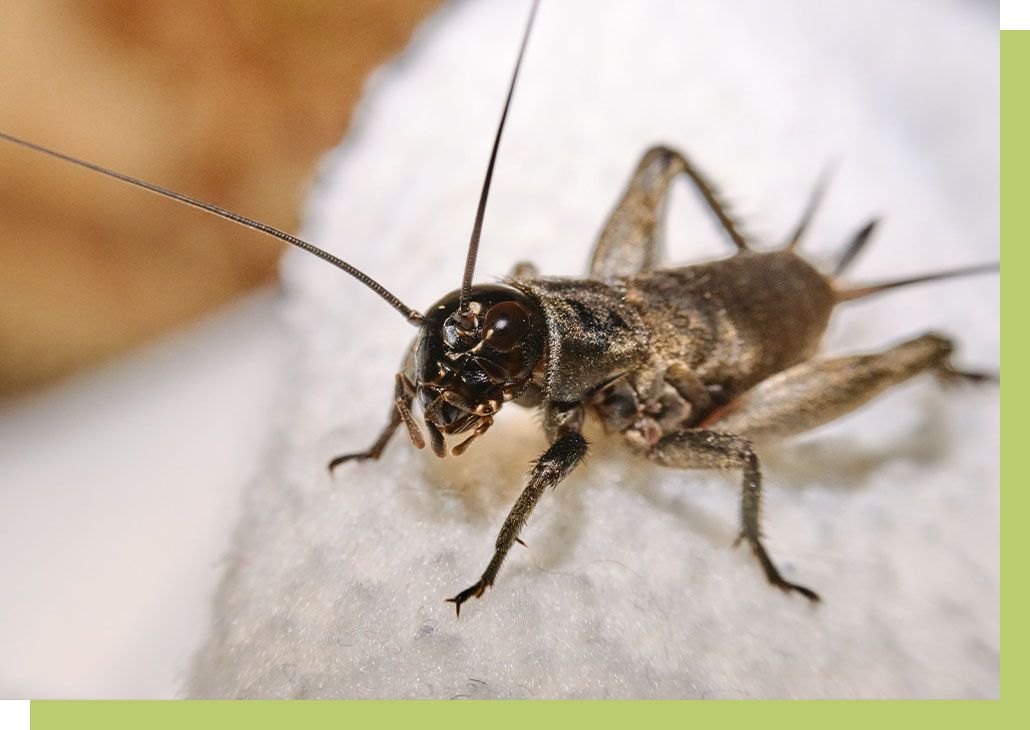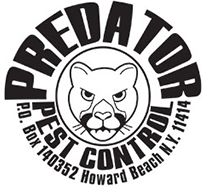Integrated Pest Management
Integrated Pest Management

Predator Pest Control’s IPM program includes the use of a wide variety of pest control techniques used to control specific pest infestations. The IPM program consists of inspecting the site, monitoring pest numbers, eliminating possible food sources, sealing cracks or crevices with silicone to eliminate any potential harborage areas, structural modifications were applicable, correcting unsanitary conditions, eliminating any type of environment that may be conducive to a pest infestation, identifying what can possibly become a potential pest problem, keeping careful records, and implementing appropriate control methods.

Integrated Pest Management
The IPM program consists of using various industry tools and techniques such as inspections, monitoring, sanitation, structural modifications and a wide variety of other pest management techniques rather than automatically turning to chemical controls as a first option. Pesticide use is an important tool to control pest infestations but an effective IPM program can greatly reduce reliance on chemical controls. In a typical IPM program, pertinent information about a pest is combined with careful selection of suitable management techniques to eliminate the causes of pest outbreaks or to otherwise manage the pest in an economical manner that also represents the lowest possible hazard to people, property, and the environment.
Our careful record keeping leads to informed decision making in managing pest infestation problems. Knowing where, when, and what pests have been seen can help us focus our pest control efforts and can be extremely helpful to our technicians in the field. Records can be maintained in a logbook, a file dedicated to this purpose, in the main office of the facility or at our office. Maps of the building and grounds are intricate parts of record keeping. A detailed map helps aid in describing where certain pests are sighted or where certain pesticides were used. Predator pest control will make up our own map if they are not available. Such documentation is critical to our IPM program.
An important part of the IPM program is routine inspections. Accurate identification of pests is vital to ensuring that control methods will be effective. Our Inspection includes determining potential locations of pest entry, determining sources of food, water, and harborage as well as looking for any signs of pests. The inspection includes searching for rodent droppings and rub stains, feeding damage, frays and cast skins of insects. Identification involves confirming the type or species of a pest needed to be controlled. Once the pest is identified and the source of its activity has been pinpointed, we will then implement habitat modifications, exclusion, removal of food and water sources and correct sanitation issues.
Our monitoring program is a continuous and ongoing estimation of all relative pest population levels. Information gained through our monitoring is evaluated to determine whether control measures are required, and when they should be used. We take all the information and knowledge gained through our inspections, identifications and monitoring and record them. By recording our findings, our technicians can make an informed decision regarding whether or not to act, and how to act in reference to pest populations and locations.
In order to stop present pest infestations and prevent future infestations, Predator Pest Control will have to make habitat modifications. Pests need food, water and shelter to survive. Eliminating or reducing these resources provides an environment that supports fewer pests. Practicing good sanitation will reduce food available for rodents, flies, yellow jackets, ants, and cockroaches. Repairing leaks and keeping surfaces dry overnight will reduce water available to pests. Removing clutter and caulking cracks and crevices will eliminate cockroach and flea harborage. Sealing food tightly in pest-proof containers will prevent access to food by flour moths and beetles. Cardboard boxes provide shelter for rodents and cockroaches. When shipments are received in cardboard boxes, we ask all of our customers to inspect them upon arrival for pests. We recommend unpacking the contents and promptly discard the boxes outside of the building whenever possible.
No items should be stored inside a building in cardboard boxes. Cracks and crevices in walls, floors or along the building foundations should be repaired and or caulked. We also recommend the removal of excessive vines, high grass and weeds around the structure to prevent harborage areas for insects and rodents. These modifications are essential in our IPM program.
Our technicians will implement a variety of non-chemical suppression tools including but not limited to snap traps, monitors, fly lights and glue traps for a variety of pests including rodents, wasps, ants, water bugs, beetles, moths and cockroaches. We also use hepa vacuums to remove cockroaches, spiders, bed bugs, insect egg, casts and droppings. Our technicians are all equipped with commercial grade steam machines that can deliver over 140 degrees Fahrenheit of steam that kills most insects including bed bugs and roaches. Removing pests with traps, hepa vacuums or even steam cleaners may be the simplest and most effective control for occasional pests.
The last option that we would use to eliminate a pest infestation is an application of a pesticide. All of our technicians have been trained in the application of botanical pesticides. These pesticides are all natural and present the least amount of mammalian toxicity. Such pesticides include the use of diatomaceous earth, pyrethrum and boric acid. These natural compounds work extremely well when used right. The health of our clients and residents and the long-term suppression of pests are the primary objectives of our IPM program. To accomplish these objectives, our IPM program first looks for non-chemical alternatives. When non-chemical methods prove to be ineffective then and only then as a last resort will our technicians resort to using a restricted pesticide in accordance with the manufacturer’s label and state law.
In conclusion, Predator Pest Control believes that all of the tools and techniques mentioned are essential in providing our clients with the most comprehensive and complete integrated pest management service available. The IPM (integrated Pest Management) approach has been proven to be the most effective type of pest elimination known in the industry. By removing all harboring areas (seal up all holes, cracks, crevices), removing access to all food and water sources (food, crumbs, leaks, standing water, etc.), implementing a strict sanitation policy (vacuum, mop, clean-up any debris, remove garbage etc.), applying traps and monitors, and as a last resort, using pesticides and or rodenticides, you will have completed a thorough IPM program with proven results. We strongly believe in using alternatives to pesticides and we have been extremely successful for the past 18 years in resolving our client’s problems by using these techniques. We hope that we can be of service to you in providing these proven techniques to prevent and or eliminate all of your pest control needs. Ask about our pest control services today.
Our services extend to a wide variety of facilities:
- Hospitals
- Health care facilities
- Nursing homes
- Day care facilities
- Schools
- Office Buildings
- Hair salons, Barber shops & Nail salons
- Supermarkets, Restaurants & Bars
- Industrial properties, Food processing plants, Warehouses & Storage facilities
- All commercial properties
Ready to Get Started?
Call or email us today and let our services speak for themselves.
